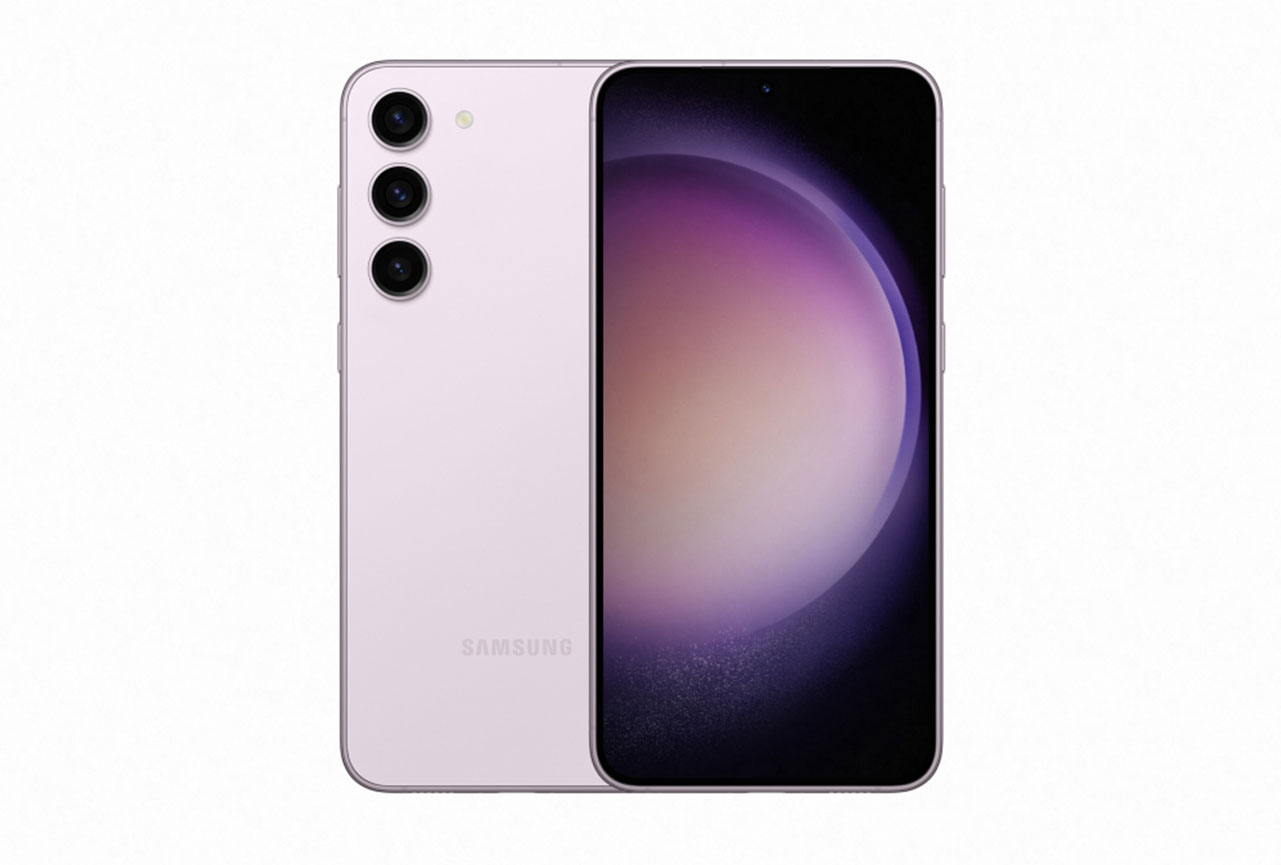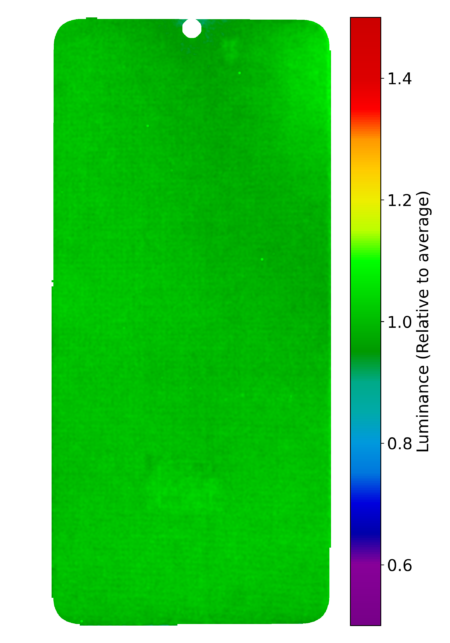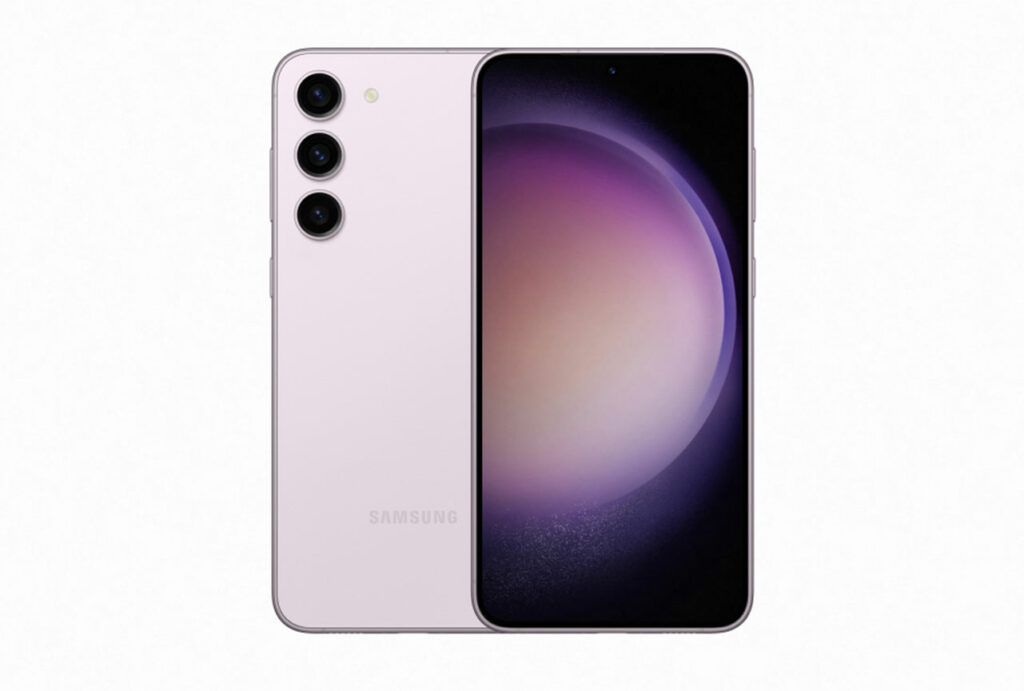We put the Samsung Galaxy S23+ through our rigorous DXOMARK Display test suite to measure its performance across six criteria. In this test results, we will break down how it fared in a variety of tests and several common use cases.
The Samsung S23 series has some of the best-performing displays currently on the market. Regardless of which S23 model you choose, the display experience will be quite similar and quite good, particularly in video, where every model achieved the same score. All models also exhibited “extra brightness” when “auto brightness” mode was deactivated on the device.
However, there were a few minor differences in the display performance of the 23+ that were noted during testing, some related to the model’s different screen dimensions as well as to the design and tuning of the display.
The S23+ finds itself between the basic S23 and the S23 Ultra when it comes to screen size. While the S23+ showed a good maximum brightness of 1500 nits when viewing photos on the screen (under 20.000 lux), this brightness, however, was 100 nits lower than the S23 and 270 nits lower than the S23 Ultra. This cost the S23+ some valuable points in readability. In the touch attribute, the 23+ outperformed the S23 Ultra as the smaller device was able to better manage corner touches. However, the S23+’s touch performance could not outperform the S23’s even slightly smaller screen in the touch attribute.
With many of the measurements being nearly identical to those of the Galaxy S23, we direct you to the full summary of the Samsung Galaxy S23 display test results.
Overview
Key display specifications:
- 6.6 inches AMOLED, (~89.9% screen-to-body ratio)
- Dimensions: 157.8 x 76.2 x 7.6 mm (6.21 x 3.00 x 0.30 inches)
- Resolution: 2340 x 1080 pixels, (~393 ppi density)
- Aspect ratio: 19.5:9
- Refresh rate: 120 Hz
Scoring
Sub-scores and attributes included in the calculations of the global score.
 Samsung Galaxy S23 Plus (Snapdragon)
Samsung Galaxy S23 Plus (Snapdragon)

147
display
143
Samsung Galaxy S24 Ultra
Best: Samsung Galaxy S24 Ultra (164)
142
Google Pixel 8
Best: Google Pixel 8 (165)
161
Samsung Galaxy S25 Ultra
Best: Samsung Galaxy S25 Ultra (167)
132
Google Pixel 7 Pro
Best: Google Pixel 7 Pro (164)
Position in Global Ranking

35
th
1. Samsung Galaxy S25 Ultra
160
8. Samsung Galaxy S24 Ultra
155
9. Samsung Galaxy Z Fold6
154
9. Samsung Galaxy S24+ (Exynos)
154
9. Samsung Galaxy S24 (Exynos)
154
16. Google Pixel 9 Pro Fold
152
17. Apple iPhone 15 Pro Max
151
22. Apple iPhone 16 Pro Max
150
22. Samsung Galaxy Z Flip6
150
29. Samsung Galaxy S23 Ultra
148
35. Samsung Galaxy A55 5G
147
38. Apple iPhone 14 Pro Max
146
40. Samsung Galaxy S24 FE
145
44. Samsung Galaxy Z Flip5
144
46. Asus Zenfone 11 Ultra
143
46. Samsung Galaxy A35 5G
143
51. Apple iPhone 13 Pro Max
142
51. Samsung Galaxy Z Fold5
142
57. Samsung Galaxy S23 FE
140
62. Xiaomi Redmi Note 14 Pro+ 5G
139
63. Honor Magic4 Ultimate
138
74. Samsung Galaxy S22 Ultra (Snapdragon)
135
74. Xiaomi Redmi Note 13 Pro Plus 5G
135
79. Samsung Galaxy S22+ (Exynos)
134
82. Samsung Galaxy Z Flip4
133
82. Samsung Galaxy S22 Ultra (Exynos)
133
82. Samsung Galaxy S22 (Snapdragon)
133
82. Vivo X80 Pro (MediaTek)
133
87. Samsung Galaxy S22 (Exynos)
132
92. Samsung Galaxy S21 Ultra 5G (Exynos)
131
92. Vivo X80 Pro (Snapdragon)
131
96. Samsung Galaxy Z Fold4
130
96. Samsung Galaxy S21 Ultra 5G (Snapdragon)
130
96. Samsung Galaxy S21 FE 5G (Snapdragon)
130
107. Samsung Galaxy A54 5G
129
111. Apple iPhone 12 Pro Max
127
115. Vivo X60 Pro 5G (Snapdragon)
126
132. Motorola Edge 30 Pro
123
136. Apple iPhone 11 Pro Max
122
136. Motorola Edge 40 Pro
122
140. Apple iPhone SE (2022)
120
146. Samsung Galaxy A52 5G
114
148. Motorola Razr 40 Ultra
113
151. Crosscall Stellar-X5
109
152. Samsung Galaxy A53 5G
108
156. Crosscall Stellar-M6
101
159. Samsung Galaxy A22 5G
82
Position in Ultra-Premium Ranking

28
th
1. Samsung Galaxy S25 Ultra
160
6. Samsung Galaxy S24 Ultra
155
7. Samsung Galaxy Z Fold6
154
7. Samsung Galaxy S24+ (Exynos)
154
12. Google Pixel 9 Pro Fold
152
13. Apple iPhone 15 Pro Max
151
17. Apple iPhone 16 Pro Max
150
17. Samsung Galaxy Z Flip6
150
22. Samsung Galaxy S23 Ultra
148
29. Apple iPhone 14 Pro Max
146
33. Samsung Galaxy Z Flip5
144
35. Asus Zenfone 11 Ultra
143
38. Apple iPhone 13 Pro Max
142
38. Samsung Galaxy Z Fold5
142
44. Honor Magic4 Ultimate
138
51. Samsung Galaxy S22 Ultra (Snapdragon)
135
53. Samsung Galaxy S22+ (Exynos)
134
55. Samsung Galaxy Z Flip4
133
55. Samsung Galaxy S22 Ultra (Exynos)
133
55. Vivo X80 Pro (MediaTek)
133
62. Samsung Galaxy S21 Ultra 5G (Exynos)
131
62. Vivo X80 Pro (Snapdragon)
131
66. Samsung Galaxy Z Fold4
130
66. Samsung Galaxy S21 Ultra 5G (Snapdragon)
130
74. Apple iPhone 12 Pro Max
127
87. Apple iPhone 11 Pro Max
122
89. Motorola Razr 40 Ultra
113
Pros
- Good readability in most lighting conditions
- Very good video experience overall
- Excellent uniformity
Cons
- Low flicker frequency and too-high brightness for night reading
- Under sunlight, colorful content lacks nuances
- Aliasing is visible when playing video games
Luminance under various lighting conditions
Contrast under various lighting conditions
Luminance uniformity measurement
This graph shows the uniformity of the display with a 20% gray pattern. The more visible the green color, the more uniform the display.
 Samsung Galaxy S23 Plus (Snapdragon)
Samsung Galaxy S23 Plus (Snapdragon)


 35th
35th
 28th
28th




DXOMARK encourages its readers to share comments on the articles. To read or post comments, Disqus cookies are required. Change your Cookies Preferences and read more about our Comment Policy.